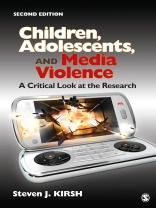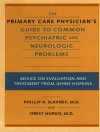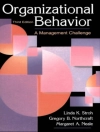This revised text provides updates that reflect new findings in the field of media violence research during childhood and adolescence. Throughout the book, special attention is paid to evaluating the role of developmental processes and to stressing the importance of methodology in understanding media violence research. Findings have been divided into two main areas: aggressive behavior and aggression-related constructs (e.g., emotions, cognitions, arousal) to help clarify media violence-related effects on youth.
Jadual kandungan
Preface
Acknowledgments
About the Author
Part I: Understanding Aggression
Chapter 1. Media Violence: History and Key Issues
Concerns About Media Violence Throughout History
Aggressive Behavior and Aggression-Related Constructs
Answering Questions So New Questions Can Be Raised
Preview of Coming Attractions
Chapter 2. Aggressive Behavior Across Development
Developmental Change in Aggression
Individual Variation in Aggressive Behavior
Sex Differences in Aggressive Behavior Across Development
Excessive Aggression in Youth
Chapter 3. Theories of Aggression
Domain-Specific Theories of Aggression
Integrative Theory
Chapter 4. Violent Media Consumption Across Childhood and Adolescence
Investigating Media Consumption Across Development
Patterns of General Media Consumption
What We Know About Violent Media Consumption
Reasons for Consuming Violent Media
Part II: Effects of Specific Forms of Violent Media on Youth
Chapter 5. Can Youth Benefit From Violent Media Consumption?
Research Related to the Benefits of Media Violence Consumption
Chapter 6. Sports Violence and Aggression
Aggression in Sport
Modeling Aggression and Its Consequences
Factors That Influence Imitative Behavior in Youth
Sports Violence and Aggression in Youth
Laying the Smackdown on Sports Entertainment
Chapter 7. Comic Books, Literature, and War Toys
Comic Book Violence
Violence in Literature and Its Relationship to Aggression and Fear
War Toys and Aggression
Chapter 8. Cartoon Violence
Cartoons: A Brief Historical Overview
Violence in Cartoons
Cartoon Violence and Aggression
Chapter 9. Violence in Music and Music Videos
Historical Overview
Violent Lyrics
Backward Masking and Satanic Messages
The Effects of Music Violence on Aggression
Violent Music Videos and Aggression
Chapter 10. Live-Action Television and Movie Violence
Violence in Movies
Violence on Television
Factors That Influence the Perception of Live-Action Violence
Television Violence and Aggressive Behavior
The Effect of Television Violence on Aggression-Related Constructs
Desensitization
Television Violence and Fear
Chapter 11. The Effects of Violent Video Games and Internet Aggression on Youth
Characteristics of Violent Video Games
The Effects of Violent Video Games on Youth as a Function of Video Game Era and Game Type
Internet Aggression
Part III. Media Violence and the Concept of Risk
Chapter 12. Aggression: Risk and Protective Factors
Beans and Aggression
Risk Factors for Aggression: Child Characteristics
Risk Factors for Aggression: Environmental Characteristics
Aggression: Protective Factors
On the Importance of Risk and Protective Factors in Media Violence Research
Chapter 13. Media Violence Effects: Magnitude and Mitigation
Meta-Analysis
Violent Media Effect Sizes in the Context of Other Risk Factors for Aggression
Moderators of Media Violence Effects
Which Media Have the Most Negative Impact on Youth?
Reducing the Effects of Media Violence Consumption Through Mediation
Chapter 14. Media Violence and Public Policy
Legislating Media Violence: Is There Really a Need?
A Brief Look at Policy Making
Violent Media and Current Policy
References
Author Index
Subject Index
Mengenai Pengarang
Steven J. Kirsh is a Professor of Psychology at The State University of New York at Geneseo. During his youth, he reports spending many hours, and dollars, in the video arcades of Ann Arbor, Michigan. Professor Kirsh’s primary areas of research focus on the influence of violent media consumption on emotion recognition and social information processing. He has published Media and Youth: A Developmental Perspective (2010) and coauthored the most recent edition of Psychology for Living: Adjustment, Growth, and Behavior Today (2011), as well as numerous scientific articles and book chapters. Professor Kirsh currently teaches courses in the areas of child development, introductory psychology, research methods, and media violence.












